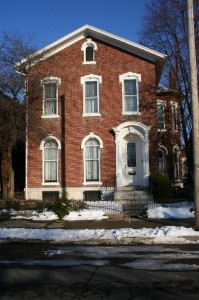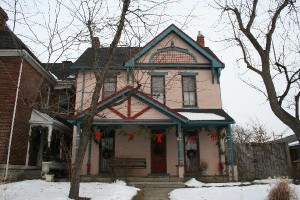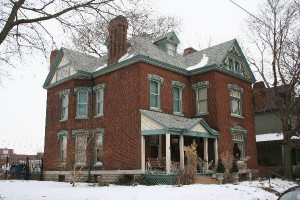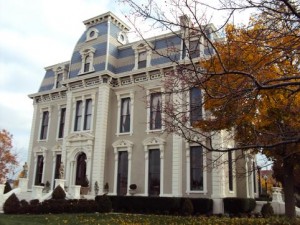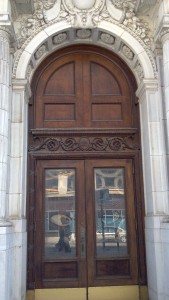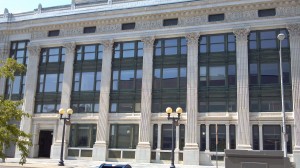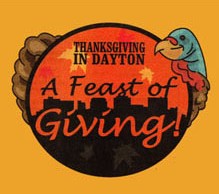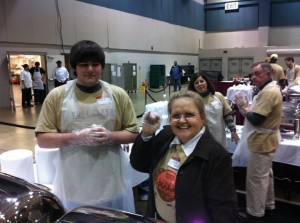This past Saturday evening, 28 of us gathered to take a tasty trip back in time. Not like the people in my books, but figuratively: we were the participants and guests at Carillon Historical Park‘s Tavern Dinner that night.
Our hosts – three ladies and two men – already looked the part in their historical clothing, as they outlined our destination, and why they’d chosen that particular year: 1830. You see, the Miami and Erie Canal had been completed through Dayton the prior year, bringing with it much greater accessibility to supplies from the east, including goodies like sugar and flour. This allowed them to offer much greater variety in the food that could be prepared for a historically-accurate, end-of-winter feast.
The canal also drastically reduced the cost of such goods. A shipment that would have cost $125 to bring to Dayton via horse-drawn wagon or stagecoach, cost only $25 to bring out on the canal. Bring on the food, right?
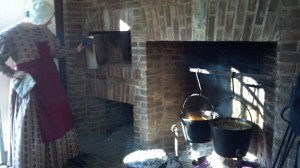
Most of our meal was cooked here! Cabbage soup and sausage stew are in the kettles. Our hostess checks the oven.
Not quite! After the introduction, we all got a little hands-on experience in preparing some of the evening’s meal. Our group went first to the summer kitchen, where our hosts had been busy since that morning, putting on the cabbage soup appetizer, the main dish stew, and getting the ingredients ready for dessert. They’d baked bread in the stone oven a few days earlier, just as would have been done in 1830. But what’s bread without butter? That still needed to be done, so we all tried our hand at churning. Not a hard job at all, but one that would get tedious if it had to be done all at once, by one person, for it takes about a half hour of steady work. While we churned, our hostess answered questions about the food preparations, and explained how the fire had been going all day, and the soup and stew put on around 2 pm that afternoon. Ever think it takes too long to preheat the oven? This one takes a couple hours! But we’d have cookies by the time dinner was done.
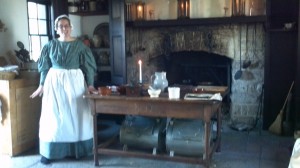
Implements for tea and coffee preparation
Our next stop was the William Morris house, an authentic, preserved historical home which, like the summer kitchen, had been trucked to the park from Centerville, about 10 miles away. There, our hostess described how coffee and tea was shipped in, and the latter roasted and ground. The coffee mill was difficult to crank – luckily, enough had been already ground that we weren’t dependent on what we could do!
After that, we stopped outside the tavern to learn about the musket that might have been used to kill the night’s meal, had we actually been in 1830. Since the group before us jammed the musket, we got to see how the term “flash in the pan” originated, when the musket didn’t create enough force to fire the bullet, but the gunpowder burnt prematurely.
Finally, we headed inside Newcom’s Tavern, Dayton’s oldest building, for dinner.
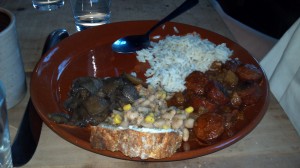
It's Historically Delicious!
As dusk descended, it certainly felt like a trip back in time to eat in the old, log building by candle light. And the food was wonderful! We started out with bread that was baked in the summer kitchen with the butter we’d churned, and cabbage soup, which was much tastier than it sounds, thanks to its beef broth base and herb seasonings.
The main dish was the sausage stew, which was a mild, savory sausage in a tomato paste base, served with locally-grown rice. The sides were a thick bean-and-corn dish, and apples and onions, which were baked in a crockery pot and dutch oven piled under ash in the summer kitchen’s fireplace. Apples and onions sounds like a strange combination, but it was really good. We also had roasted diced potatoes, with onions, carrots, and turnips.
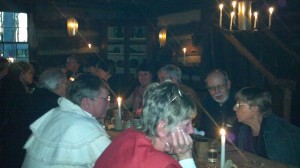
Candlelight dinner in the tavern
After dinner, we were in for yet another treat. A trio of illusionists who said they’d just ridden in on the stagecoach from Cincinnati performed a few magic tricks and card tricks for us and got more than a few laughs. We capped off the evening with dessert – stewed pears, with the sugar cookies that had just been baked in the summer kitchen. All in all, a fantastic meal!
Have you ever eaten a historic dinner, prepared by historically-accurate means? What do you think of the menu – does it sound like something you’d like to try? Have you ever churned butter or fired a musket?



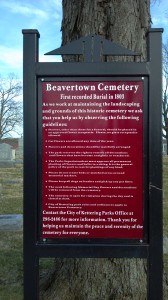
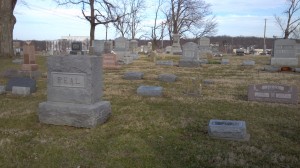
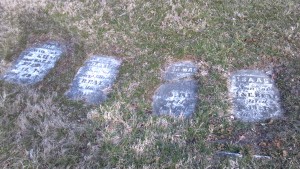

 This Saturday night, 16 area business people, arts and charitable organization representatives, Dayton Daily News staffers, and other volunteers will participate in Dayton’s own fight club – for charity. These fighters and their audience of 2500 (if it sells out) will get to take a little trip back in time, too (figuratively, of course) as they take Memorial Hall back to its glory days, when it was the place to go to see the fights.
This Saturday night, 16 area business people, arts and charitable organization representatives, Dayton Daily News staffers, and other volunteers will participate in Dayton’s own fight club – for charity. These fighters and their audience of 2500 (if it sells out) will get to take a little trip back in time, too (figuratively, of course) as they take Memorial Hall back to its glory days, when it was the place to go to see the fights.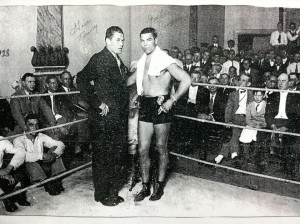
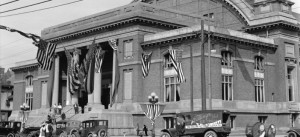
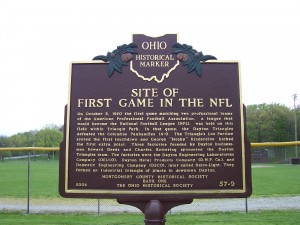
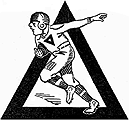 In 1916, the Cadets reorganized as the Dayton Triangles, pulling their roster from the employees of their three corporate sponsors, DELCO, Delco-Light, and the Dayton Metal Products Company. The Triangles’ Manager, Carl Storck, represented the team in meetings in Canton that ultimately resulted in the forming of the AFPL.
In 1916, the Cadets reorganized as the Dayton Triangles, pulling their roster from the employees of their three corporate sponsors, DELCO, Delco-Light, and the Dayton Metal Products Company. The Triangles’ Manager, Carl Storck, represented the team in meetings in Canton that ultimately resulted in the forming of the AFPL.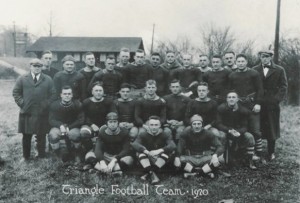
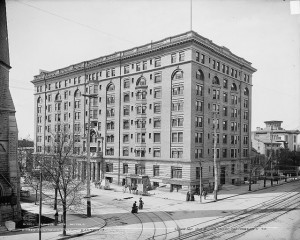
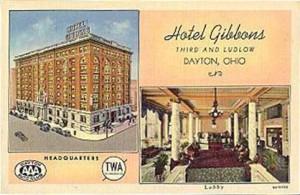
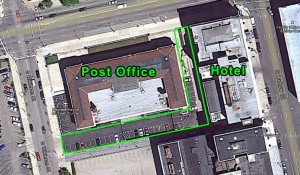
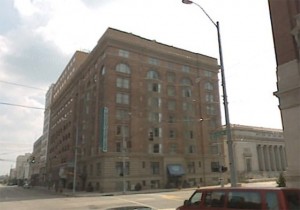
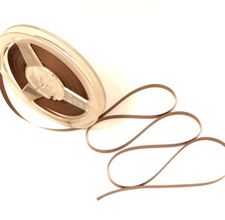
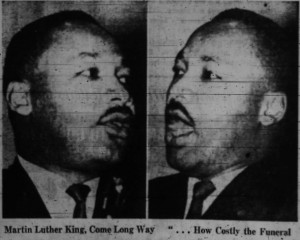

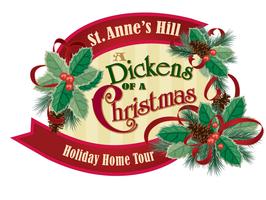 This past Friday night, my daughter and I went back in time. Well, not really, and certainly not like the characters in
This past Friday night, my daughter and I went back in time. Well, not really, and certainly not like the characters in 